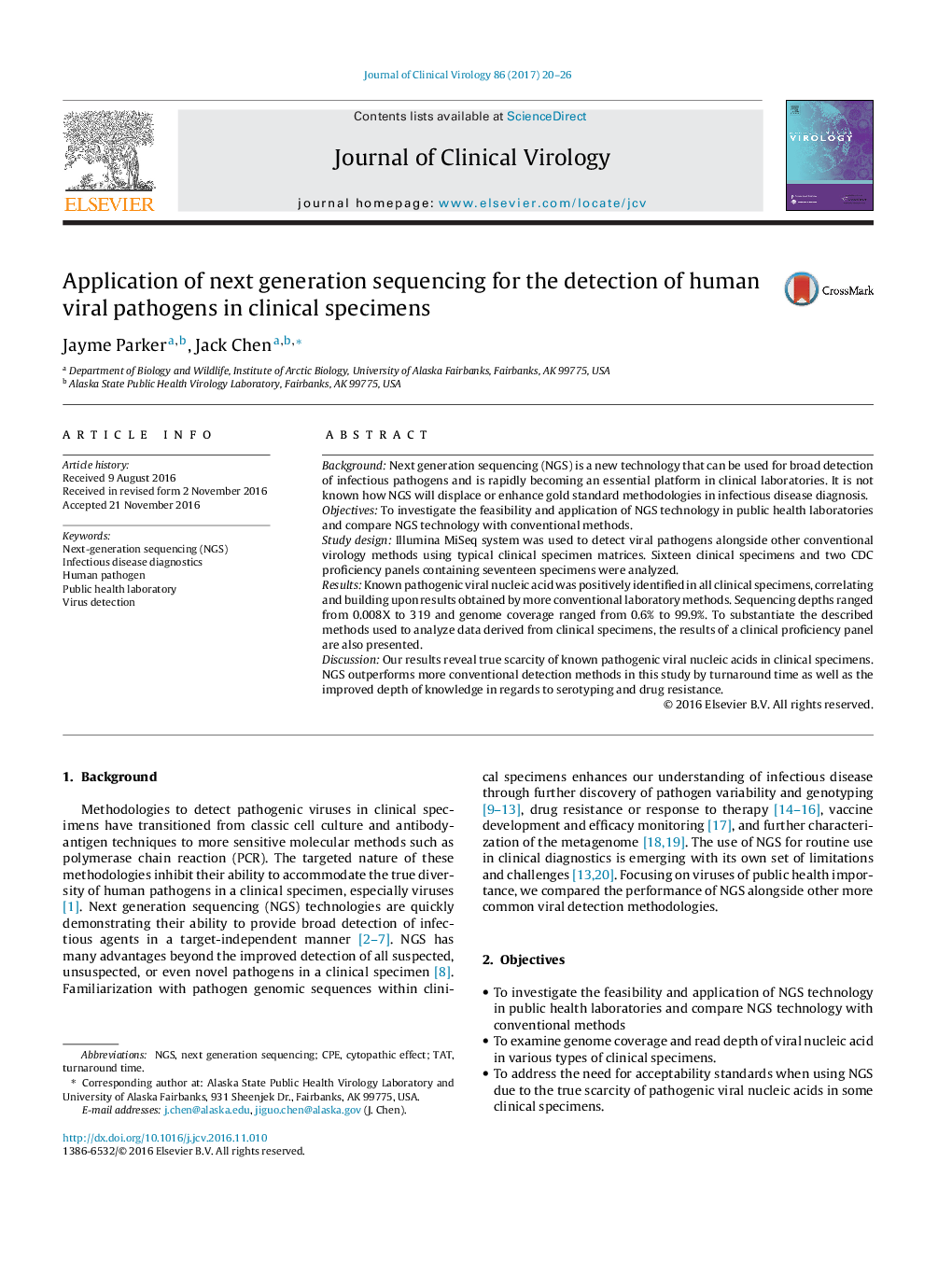| کد مقاله | کد نشریه | سال انتشار | مقاله انگلیسی | نسخه تمام متن |
|---|---|---|---|---|
| 5668021 | 1592340 | 2017 | 7 صفحه PDF | دانلود رایگان |
- NGS technology is compared to conventional laboratory methods in a public health laboratory.
- Viral genome coverage and read depth of viral nucleic acids in various types of clinical specimens are reported.
- The need for acceptability standards for NGS due to the scarcity of pathogenic viral nucleic acids is addressed.
BackgroundNext generation sequencing (NGS) is a new technology that can be used for broad detection of infectious pathogens and is rapidly becoming an essential platform in clinical laboratories. It is not known how NGS will displace or enhance gold standard methodologies in infectious disease diagnosis.ObjectivesTo investigate the feasibility and application of NGS technology in public health laboratories and compare NGS technology with conventional methods.Study designIllumina MiSeq system was used to detect viral pathogens alongside other conventional virology methods using typical clinical specimen matrices. Sixteen clinical specimens and two CDC proficiency panels containing seventeen specimens were analyzed.ResultsKnown pathogenic viral nucleic acid was positively identified in all clinical specimens, correlating and building upon results obtained by more conventional laboratory methods. Sequencing depths ranged from 0.008X to 319 and genome coverage ranged from 0.6% to 99.9%. To substantiate the described methods used to analyze data derived from clinical specimens, the results of a clinical proficiency panel are also presented.DiscussionOur results reveal true scarcity of known pathogenic viral nucleic acids in clinical specimens. NGS outperforms more conventional detection methods in this study by turnaround time as well as the improved depth of knowledge in regards to serotyping and drug resistance.
Journal: Journal of Clinical Virology - Volume 86, January 2017, Pages 20-26
